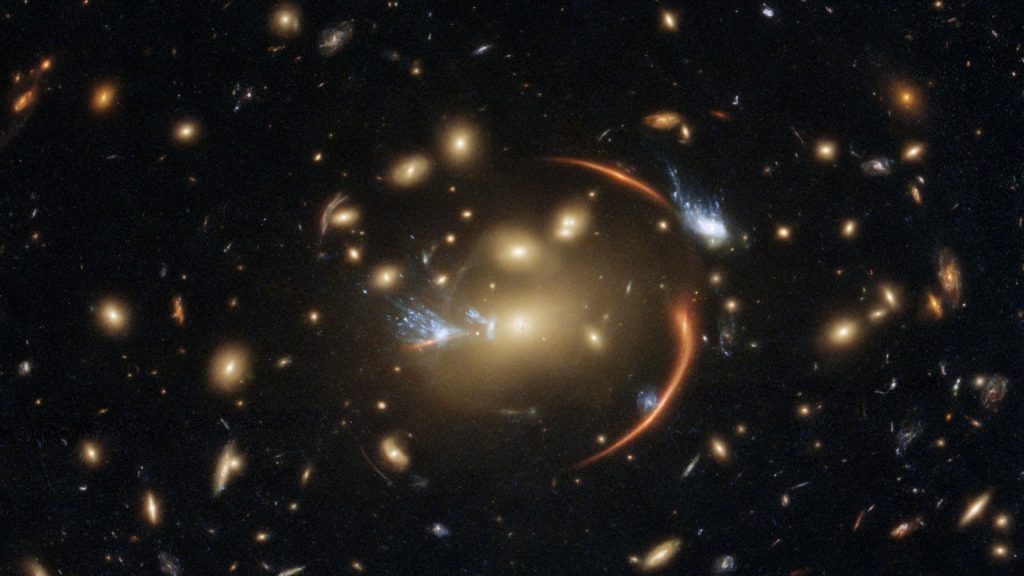Astronomers have discovered a supernova located, when seen from Earth, behind a large group of galaxies – and it has already lit up three times. Because the galaxy cluster acts as a large lens, but is irregular in shape, and thus creates several images of the object behind it. In 2037, a fourth flash can be expected from this same stellar explosion, the research team report in the journal Nature Astronomy.
“When the light of a distant celestial body passes through a galaxy group in the foreground, it acts as a gravitational lens and creates multiple images of an object in the background,” Stephen Rodney of the University of South Carolina, USA, and colleagues explain. Because the galaxy cluster bends even the path of the light due to its very intense gravity and the light reaches the Earth at different times. Then we perceive the fluctuations in the brightness of a distant object at different times. These time periods also depend on the cosmic expansion rate, which describes how fast the universe is expanding. Thus, based on the different times that the supernova lights up here, it is possible to determine how fast the universe is expanding.
Until now, astronomers have used this method mainly for quasars, the bright cores of distant galaxies in the young universe. But using these objects, it is difficult to distinguish between true changes in brightness and disturbances in the front of the gravitational lens. Therefore, according to Rodney and colleagues, you need a lot of observations through gravitational lenses in order to get reliable data on the expansion rate of the universe – however: the uncertainty remains high.
The star’s now-tracked explosion, known as the Requiem Supernova, provides the opportunity to more accurately determine the rate of space expansion – with a deviation of up to one percent. To do this, the researchers examined the light from the explosion of the star, which traveled 10.3 billion years to Earth. After the search team spotted a supernova on images from the Hubble Space Telescope from 2016, astronomers searched the Hubble archives and came across two additional images of the supernova, 17 days before and 114 days after the image was initially found.
Based on the location of the images and time differences, Rodney and colleagues developed a model of the galaxy cluster 3.8 billion light-years away, which acts as a gravitational lens. It turns out that the cluster’s gravitational field should produce another picture of the supernova – and that this will be visible on Earth only in 2037. Since the supernova was at that time about 20 years ago, the time interval between measurements can be accurately determined in a few days, that is, Less than one percent of the time period.
The researchers stress that this fourth observation of a flashing supernova also allows for a very precise determination of cosmic expansion. In contrast, similar measurements previously required a wide series of observations. So the Mass supernova could prove to be a godsend for astrophysics. Because by measuring the images of the shown background galaxies, the galaxy cluster can be modeled better and the accuracy of the measurements can be increased.

“Total coffee aficionado. Travel buff. Music ninja. Bacon nerd. Beeraholic.”







More Stories
Researchers detect extremely high-energy gamma rays
Anxiety disorders in old age increase the risk of dementia
Researchers are particularly fascinated by these exoplanets.